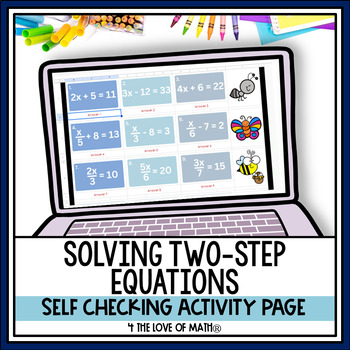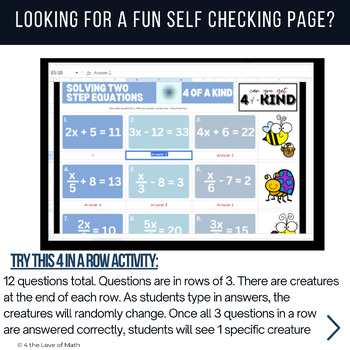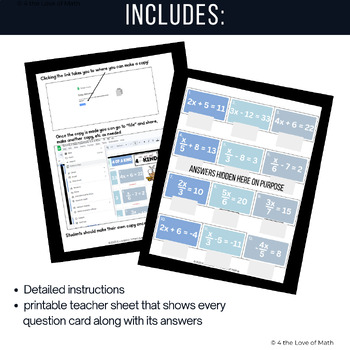Solving Two-Step Equations Self Checking Digital Sheets Activity
- PDF
- Google Apps™

Description
Looking for an engaging way to help students master two-step equations? Dive into this self-checking activity on Google Sheets that's both fun and interactive! Students will face 12 distinctive solving two-step equation problem cards, each one pushing them to solve a two-step equation. As they input their answers into the sheet, a rotating plethora of pictures will appear.
After typing 3 consecutive correct answers, the design on that row will cease its rotation and unveil 1 specific picture. When all four rows show identical designs students will know they have correctly completed the assignment.
Why Use this Solving Two-Step Equations Activity:
- Immediate Feedback: Students confront 12 distinct problem cards, receiving instant feedback as they tackle two-step equations and input their answers into the sheet.
- Motivated Learning: Unlock the potential of goal-oriented learning as students strive to achieve 3 consecutive correct answers. With each correct response, a rotating array of pictures unfolds, revealing a specific picture when the row stops. It's an engaging challenge that keeps students motivated and focused.
How to Use this Solving Two-Step Equations Activity:
- Share this Google Sheets activity with your students.
- Encourage them to dive into the 12 unique problem cards, aiming for the magic number: 3 consecutive correct answers. There are a variety of two-step equation types of questions included.
- Leverage the included question/answer page to offer support and guidance to students whenever they encounter challenges.
Included is a detailed question/answer page that displays every problem card alongside its solution. This makes it a breeze for you to guide your students back on track whenever they stumble.
Infuse excitement into your class, while reinforcing essential math concepts. This activity empowers students and makes learning enjoyable.
Note: This activity is similar to another solving two-step equations activity. However, the other one is Halloween-themed. The 2 activities have completely different questions & images.
For any questions please email me: randi@4theloveofmath.com.





